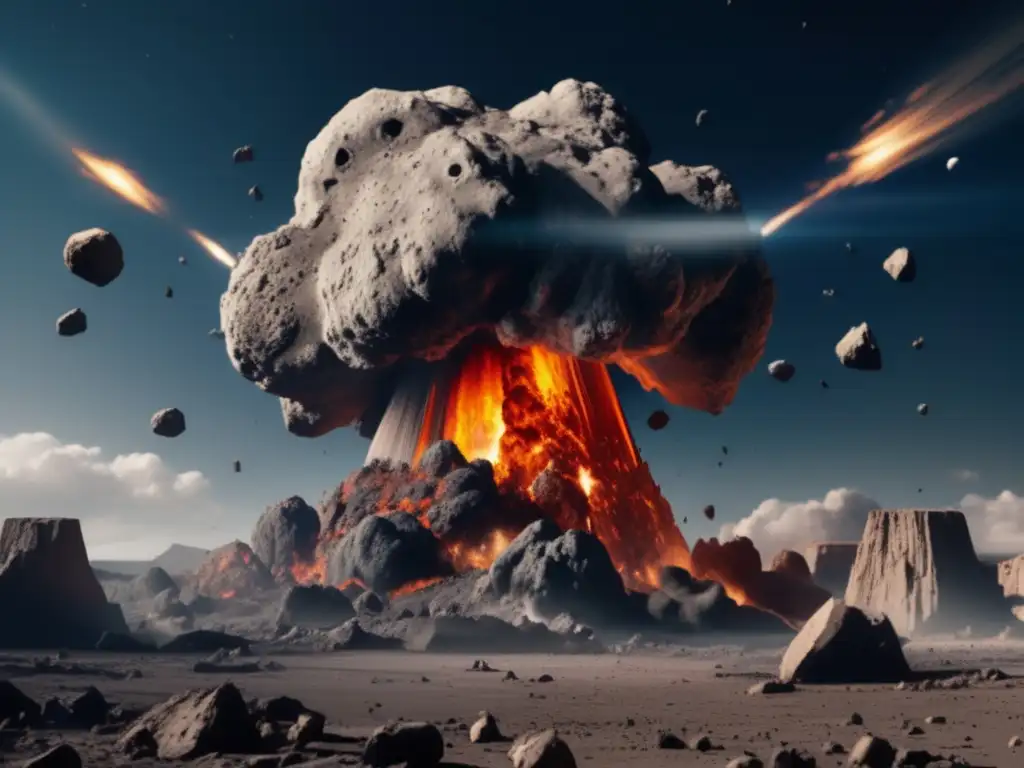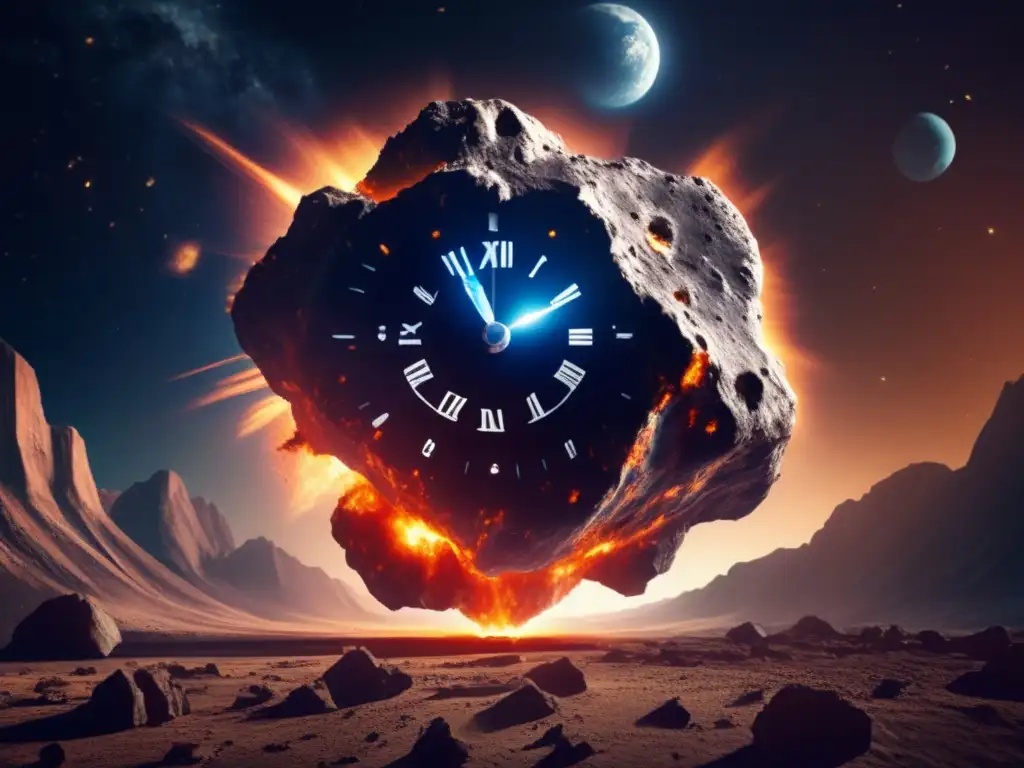Space Rocks And The Clock: Timing Asteroid Impacts

Introduction
Asteroid impacts have been impacting Earth for billions of years, from small meteorites that strike the atmosphere unnoticed to catastrophic collisions that have changed the course of history. The timing of these impacts varies depending on multiple factors, such as the size, composition, and trajectory of the asteroid. Understanding the timing of asteroid impacts is crucial for predicting the likelihood of future collisions and mitigating their potential effects.
The Role of the Solar System Clock

What is the Solar System Clock?
The Solar System Clock is a tool used by astronomers and scientists to estimate the age and timing of events in our solar system's history. It is based on the decay of radioactive isotopes found in rocks and meteorites and allows us to determine the age of the objects in the solar system, including asteroids and Earth. By analyzing the ratios of different isotopes, we can also estimate the timing of past asteroid impacts on Earth.
Using the Solar System Clock to Date Asteroid Impacts
Scientists use the Solar System Clock to determine the ages of impact structures on Earth's surface. They collect rock samples from the site of suspected impacts and measure the concentrations of various isotopes. By comparing the isotopic ratios with those found in meteorites, which are of known ages, they can determine the age of the impact structure.
The Limitations of Dating Asteroid Impacts
The Solar System Clock has limitations when it comes to dating asteroid impacts accurately. For example, small impact events may not leave enough evidence to be detected properly, or the impact structure may have eroded over time, making it difficult to date the event accurately. Another limitation is that the Solar System Clock can only date impacts that occurred within the last few billion years, as it becomes increasingly difficult to measure isotopic ratios over longer timescales.
The Connection Between Asteroid Impacts and Mass Extinctions

The Theory of Impact-Induced Mass Extinctions
One of the most significant ways asteroid impacts have influenced Earth's history is through mass extinctions. Evidence suggests that a major asteroid impact was responsible for the extinction of dinosaurs 65 million years ago. The impact caused a massive shockwave and changes in the climate, leading to extensive alterations in the environment that made it challenging for many species to survive.
Understanding the Timing of Mass Extinctions
By studying the ages of impact structures and fossil records, scientists have been able to develop a timeline of mass extinctions throughout Earth's history. They have discovered that several mass extinctions coincide with significant asteroid impacts, such as the end-Cretaceous extinction event that killed off the dinosaurs. This information has helped us understand the frequency and timing of catastrophic asteroid impacts on Earth, allowing us to better prepare for potential future events.
Preventing Future Mass Extinctions
Despite technological advancements and increased knowledge about asteroids, we still face the threat of future mass extinctions caused by asteroid impacts. To prevent such an event, scientists are developing methods of deflecting asteroids away from Earth's path. These methods include gravitational tractor beams and kinetic impactors, which could potentially nudge an asteroid off course before it poses a threat to our planet's safety.
The Importance of Asteroid Research

Advancing Our Understanding of Asteroids
Asteroid research is crucial for understanding not just the potential impact hazards they pose to Earth, but also their role in the formation and evolution of the solar system. By studying asteroids' composition and structure, we can gain insights into the early stages of the solar system's formation and how planets like Earth came to be.
Improving Our Ability to Detect Incoming Asteroids
The discovery of potentially hazardous asteroids is an essential step in preventing future impacts. Through improved detection methods, such as ground-based telescopes and space-based observatories, we can identify potentially dangerous asteroids before they get too close to Earth. We can then take action to deflect them away from Earth's path or destroy them before they cause significant damage.
Helping Us Prepare for Future Impacts
By improving our understanding of asteroid impacts and their effects on Earth, we can better prepare for future events. This preparation includes developing warning systems that alert people to potential impacts, creating evacuation plans for impacted areas, and investing resources in technologies that can help mitigate the effects of an impact.
Frequently Asked Questions

-
How do scientists estimate the timing of asteroid impacts?
Scientists use the Solar System Clock to determine the ages of impact structures on Earth's surface by measuring isotopic ratios in rock samples collected from the site of suspected impacts.
-
What is the connection between asteroid impacts and mass extinctions?
Several mass extinctions throughout Earth's history coincide with significant asteroid impacts, suggesting that these events were responsible for widespread devastation and extinction of numerous species.
-
What can we do to prevent future asteroid impacts?
Scientists are developing methods of deflecting asteroids away from Earth's path, such as gravitational tractor beams and kinetic impactors.
-
Why is asteroid research important?
Asteroid research is essential for understanding their role in the formation and evolution of the solar system, improving our ability to detect incoming asteroids, and helping us prepare for future impacts.
-
How can we prepare for the potential impacts of asteroids?
Preparation includes creating warning systems, evacuation plans, and investing resources in technologies that can help mitigate the effects of an impact.
Conclusion
Asteroid impacts have shaped Earth's history and continue to pose a threat to our planet's safety. Understanding the timing of these impacts is crucial for predicting and preventing future collisions. Through ongoing asteroid research, we can improve our knowledge of these celestial objects and develop advanced technologies that can help mitigate the potential impact hazards they pose. By working together, we can help protect our planet and ensure its safety for generations to come.
Additional Resources

For additional information on asteroids, visit:
- https://cneos.jpl.nasa.gov/
- https://www.nasa.gov/planetarydefense/overview
- https://www.space.com/topics/asteroids
 Shocked Quartz: A Mineralogical Indicator Of Asteroid Strikes
Shocked Quartz: A Mineralogical Indicator Of Asteroid Strikes Asteroids And The Atmosphere: Understanding Entry And Impact
Asteroids And The Atmosphere: Understanding Entry And Impact Space Invaders: How Asteroids Have Shaped Our World
Space Invaders: How Asteroids Have Shaped Our WorldIf you want to discover more articles similar to Space Rocks And The Clock: Timing Asteroid Impacts, you can visit the Asteroid Impacts category.
Leave a Reply

Articulos relacionados: